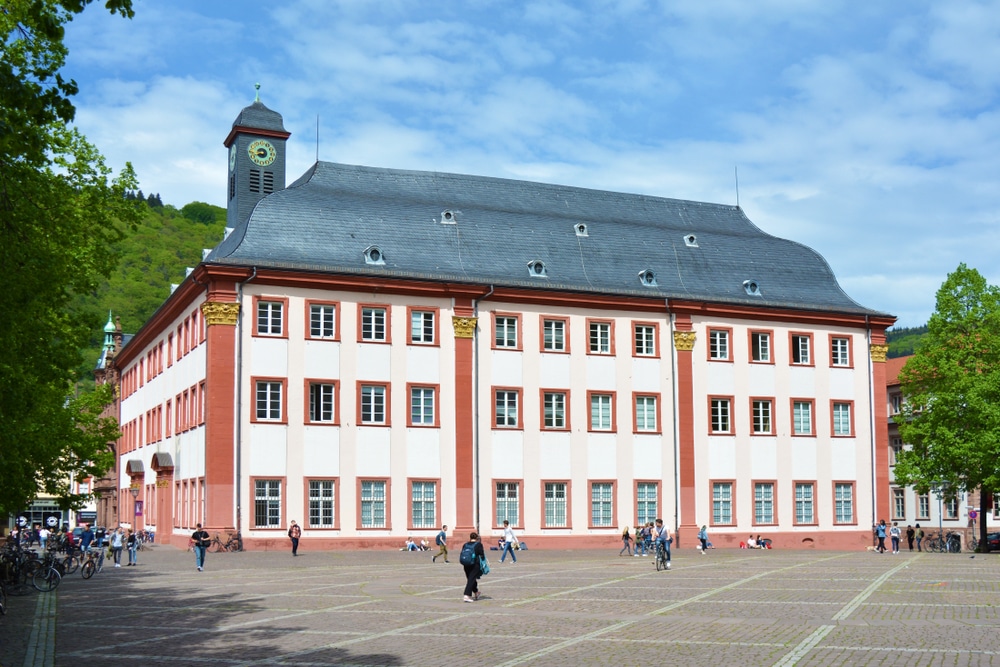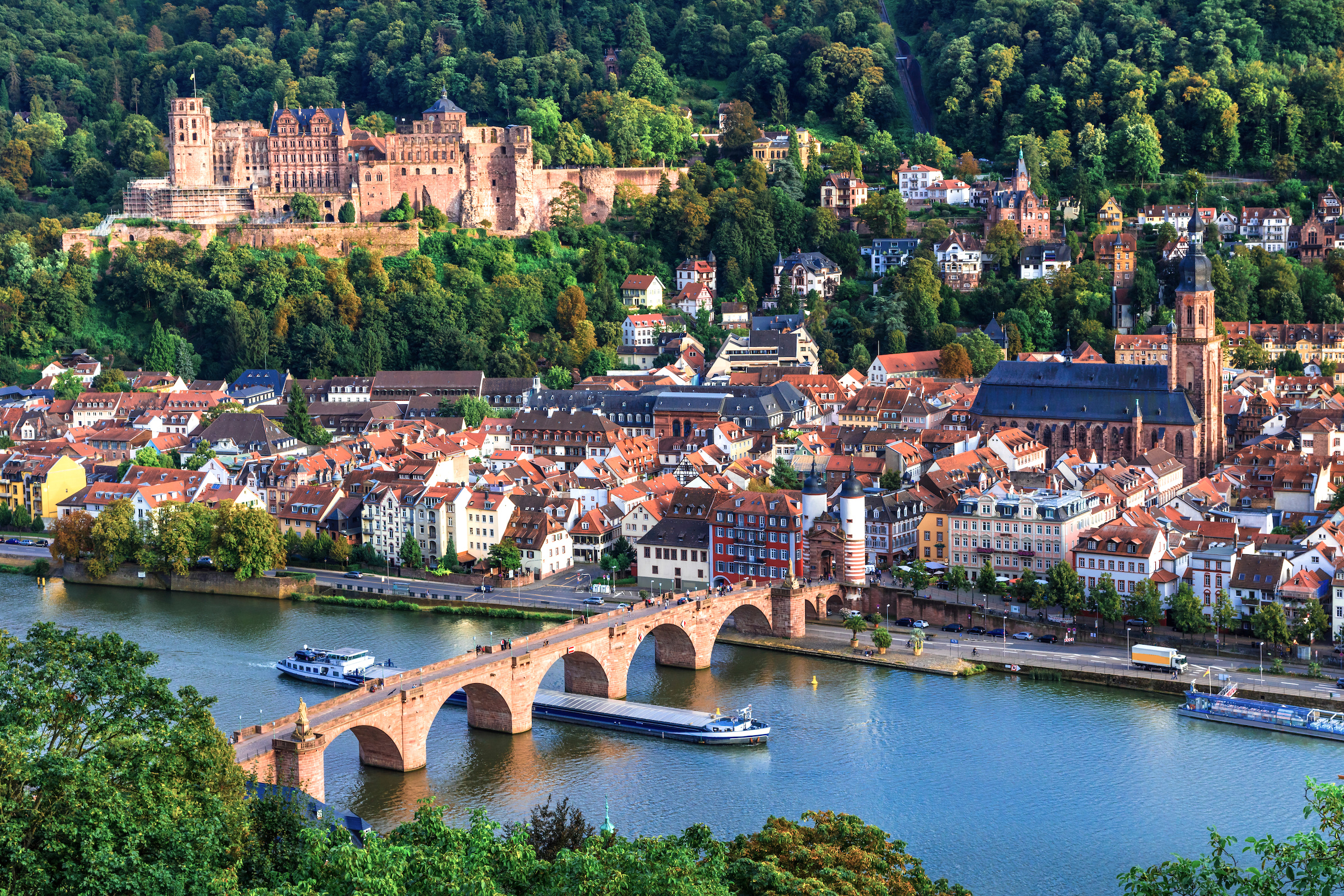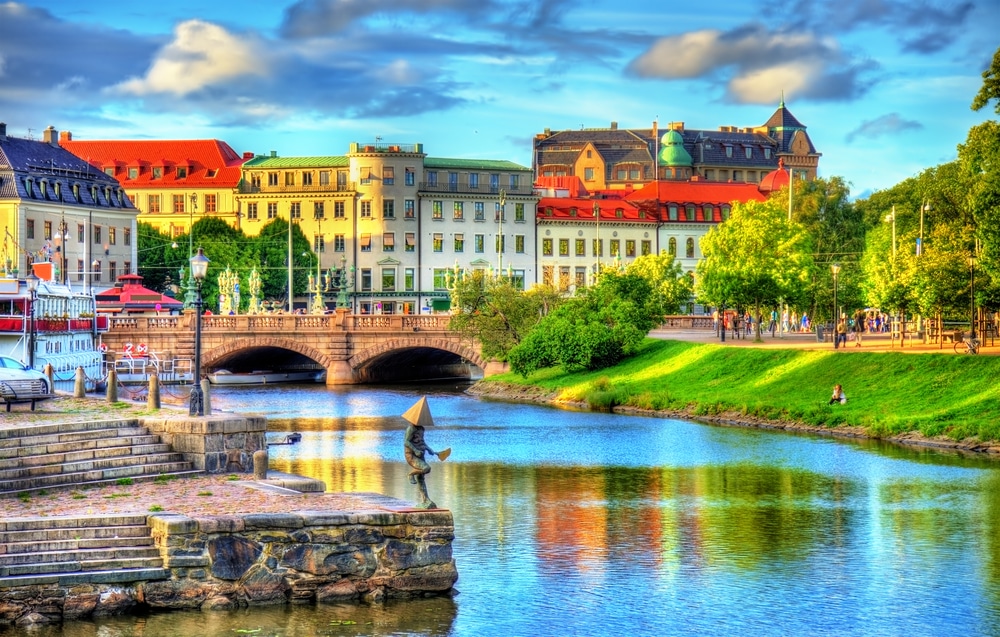- Home ›
- Germany ›
- Heidelberg
Centrally located in Heidelberg's old town between the Neckar River and the historic city wall, Universitätsplatz can look back on a long history and a whole series of former names. From the late 13th to the end of the 17th century, an Augustinian monastery was located here, where Martin Luther defended his controversial theses during the "Heidelberg Disputation" in April 1518. After the destruction of the monastery in 1693 during the Palatinate War of Succession, the then Elector Karl Theodor bought the site in 1753 and had a parade ground named "Paradeplatz" built there. From about 1830 to 1928, the representative square then bore the name "Ludwigsplatz" for almost 100 years in honour of Ludwig I, Grand Duke of Baden, who died in 1830.
Unfortunately, the square was misused politically for a number of years in darker times
In order to take into account the growing international reputation of the "Ruprecht-Karls-Universität Heidelberg", founded in 1386, during the Weimar Republic, the square was given the name "Universitätsplatz" for the first time from 1928 to 1937. However, the democratic and liberal spirit that still largely prevailed at the educational institution after 1933 was a thorn in the side of the National Socialist rulers. After state-planned and staged book burnings had already taken place on the square in May 1933, it was renamed "Langemarckplatz" in 1937. This was intended to commemorate the myth of Langemarck, which had been politically glorified by conservatives. The battle in November 1914 near the Belgian town of the same name, which from the German point of view was actually militarily unsuccessful, was propagandistically glorified as a "heroic deed" by the Reichswehr and right-wing circles.
Today, the Universitätsplatz is one of the liveliest places in the old town.
The great good fortune that the city of Heidelberg had in view of the comparatively very minor destruction caused by bombing raids by Allied units in the final phase of the Second World War also affected the aforementioned square, which has again borne its ancestral name since 1945. In the course of a general and large-scale redesign of Heidelberg's city centre from 1972 to 1978 ("Task of the Century: Old Town Redevelopment"), Universitätsplatz became part of the longest pedestrian zone in Germany to date, at 1.6 kilometres. Thanks to the comprehensive traffic calming measures, the continuously paved Universitätsplatz has since developed into an extremely popular meeting place for locals and visitors alike. The numerous surrounding restaurants and street cafés as well as the refectory are well frequented almost all year round. The bus stop on the square serves as an important transport hub for both the many students and tourists.
Several times a year the square becomes part of large and popular festivals
The auditorium of the Old University, built between 1712 and 1735 in the Baroque style on the north side of the square, is often the venue for concerts, readings, and lectures. The New University, built in the 1930s at the south end of the square, was thoroughly modernized and redesigned from 2009 to 2011. The former Heidelberg Studentenkarzer, located in the immediate vicinity on Augustinergasse, is one of the city's most popular sights, as is the University Museum. Well-attended events such as the Heidelberg Literature Days, the Heidelberg Autumn, the Strolling Festival of Cultures and the large Christmas market regularly take place around the Lion Fountain in front of the Old Assembly Hall.




